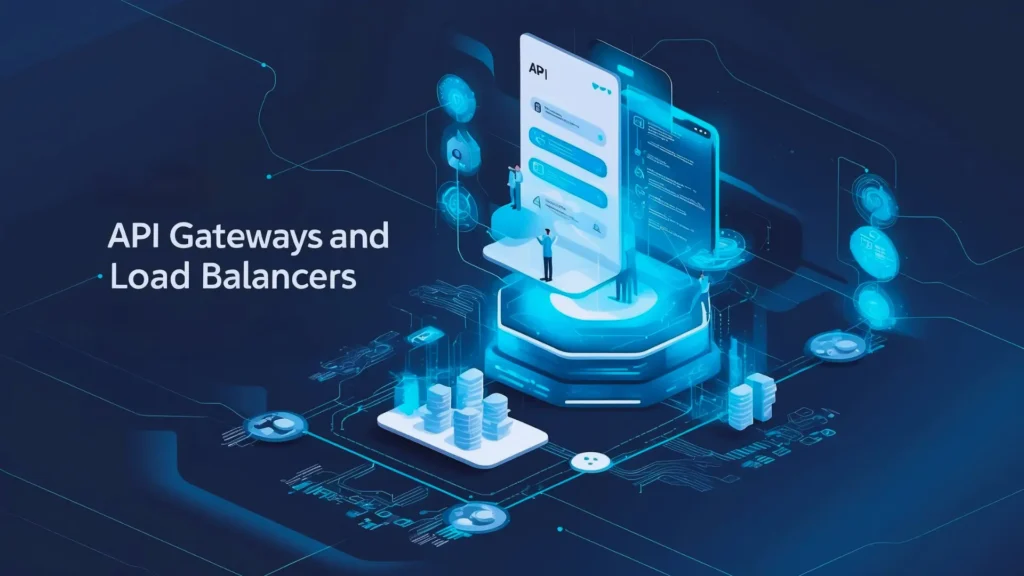In today’s digital age, API gateways are becoming pivotal in microservices architecture. But what exactly is an API gateway, and why is it so essential? Simply put, an API gateway acts as a single entry point for all API traffic, offering numerous benefits such as enhanced security, scalability, and manageability. Today, let’s dive into the top five use cases for API gateways and see how they can supercharge your microservices architecture.
To learn more about the differences of API gateways and load balancers, check out this guide
Caching: Boosting Performance and Efficiency
One of the most significant advantages of using an API gateway is caching. By caching responses from backend services, an API gateway can significantly enhance your application’s performance. For instance, if a client repeatedly requests the same data, the API gateway can deliver this data directly from its cache rather than fetching it from the backend service repeatedly. This not only reduces the load on your backend services but also speeds up response times for the client.
Real-World Example
Consider a weather application that frequently fetches the current temperature for a specific location. Instead of querying the backend service every time, the API gateway can cache the temperature data and serve it to all subsequent clients requesting the same data within a designated time frame. This approach can drastically reduce latency and improve the user experience.
For more on how caching works, check out this guide on caching strategies.
Aggregation: Simplifying Data Retrieval
Another game-changing feature of API gateways is their ability to aggregate data from multiple backend services into a single response. This capability can simplify client-side code and enhance application performance.
Real-World Example
Imagine an e-commerce application where a single API request needs to fetch a customer’s order history, product recommendations, and shipping information. Instead of making separate requests to different backend services, the API gateway can aggregate this data and provide a unified response.
To learn more about data aggregation, visit this article on API design.
Request Routing: Optimizing Traffic Flow
API gateways are also adept at routing incoming requests to the appropriate backend service based on specific criteria such as the request path or other attributes. This is particularly beneficial for scaling applications and improving overall performance.
Real-World Example
An API gateway in a banking application might route requests for transaction histories to a different backend service than those handling user authentication. This segregation ensures that each service can be optimized and scaled independently based on its specific demands.
Discover more about request routing in this detailed guide by NGINX.
Rate Limiting and Throttling: Protecting Your Services
API gateways can control the number of requests a user can make within a specified timeframe, a process known as rate limiting and throttling. This feature is crucial for preventing denial-of-service attacks and ensuring fair access for all users.
Real-World Example
For example, a social media platform can use an API gateway to limit the number of posts a user can make within an hour. If a user exceeds this limit, the gateway will throttle their requests, maintaining the integrity and availability of the backend services for all users.
Explore more about rate limiting in the AWS documentation.
Authentication and Authorization: Securing Your API
Security is paramount in today’s digital landscape, and API gateways play a critical role in authenticating and authorizing user access to backend services. By validating user credentials and permissions, API gateways can protect your application from unauthorized access.
Real-World Example
Consider a healthcare application where sensitive patient data must be secured. An API gateway can ensure that only authenticated and authorized users can access or modify this data, thereby protecting patient privacy and maintaining compliance with regulations.
For a deep dive into authentication and authorization, refer to this comprehensive resource by Auth0.
Conclusion: The Power of API Gateways
API gateways are integral to modern microservices architecture, offering unmatched benefits in security, scalability, and manageability. Whether through caching, aggregation, request routing, rate limiting, or authentication, API gateways streamline operations and enhance the performance of distributed systems.
If you’re interested in exploring more about API gateways, microservices, and related topics, don’t forget to check out high-authority resources like IBM’s API Design Best Practices, AWS’s API Gateway Documentation, and NGINX’s API Gateway Learning.
By integrating an API gateway into your microservices architecture, you’re not just adopting a tool; you’re embracing a powerful strategy to optimize and secure your applications. So, why wait? Start leveraging the power of API gateways today and take your microservices to the next level.
FAQ
What is the main use of an API gateway?
An API gateway manages and secures APIs, handling tasks like user authentication, traffic monitoring, rate limiting, and API routing, all in one centralized location.
What are API use cases?
APIs enable integration between different systems, power mobile apps, facilitate third-party services, enable automation, drive microservices architectures, offer data access, and support cloud services.



